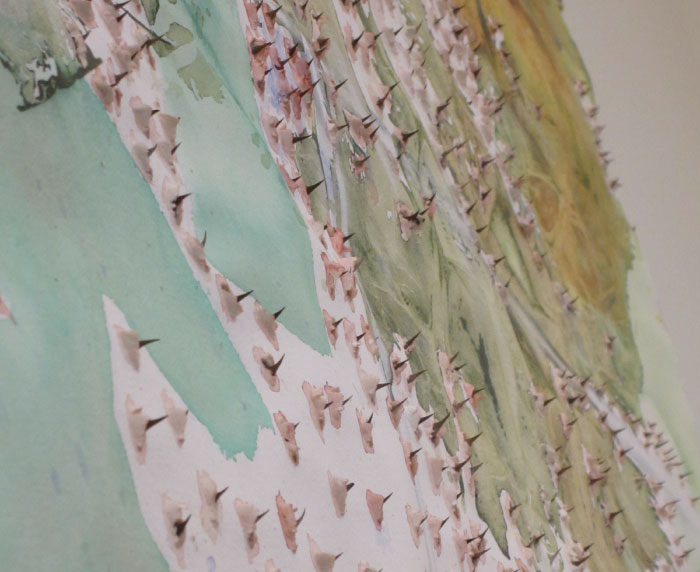The artwork, classified as Invasions, originates from my urge to reveal what I perceive as the true conditions of natural
communities, some of which are moving toward a state of imbalance. Both the inorganic and the organic, or living,
components of ecosystems are subject to change, possibly happening so slowly that it may occur without detection
during a human lifetime or happening very quickly and noticeably. Many of those abrupt changes are brought about by
human actions which can be detrimental to a natural community. The introduction of exotic or non-native plant species
has resulted in one such rapid change. Certain exotic species are invasive, proliferating at such a rate as to crowd
out indigenous species. These invasives can cause the movement of a balanced ecosystem full of diverse organisms
toward a monoculture within a relatively short period of time. My artwork, produced in this strain, emphasizes
this unfortunate movement.
Also, within this strain my creative process has conceptual significance. My act of mark-making communicates an aggressive
form of invasion. In my hands, paper is treated in a physical manner, becoming not only a support but also a significant
medium. The botanical materials I incorporate into my pieces are likewise important conceptually. Appearing in the artwork
are actual fragments of leaves and stems of garlic mustard (Alliaria petiolata), seed heads of phragmites grass (Phragmites
spp.), and thorns of multiflora rose (Rosa multiflora). These are just a few exotic invasive plant species which pose a threat.
Despite the tendency of a map to simulate an aerial view which falsely suggests a static state, the map is my index to place.
Maps generally shed light upon real time or a moment that has happened. Because the accepted purpose of maps, throughout
history, is to describe an actual landscape as accurately as possible, the viewer is linked to a real space, an actual landscape.
Aspects of maps can become unhinged or ambivalent, possessing the possibility of alluding to both vast formations of land and
microscopic constituents of tissue. This ambivalence in maps allows for the representation of a non-exclusive landscape.





















